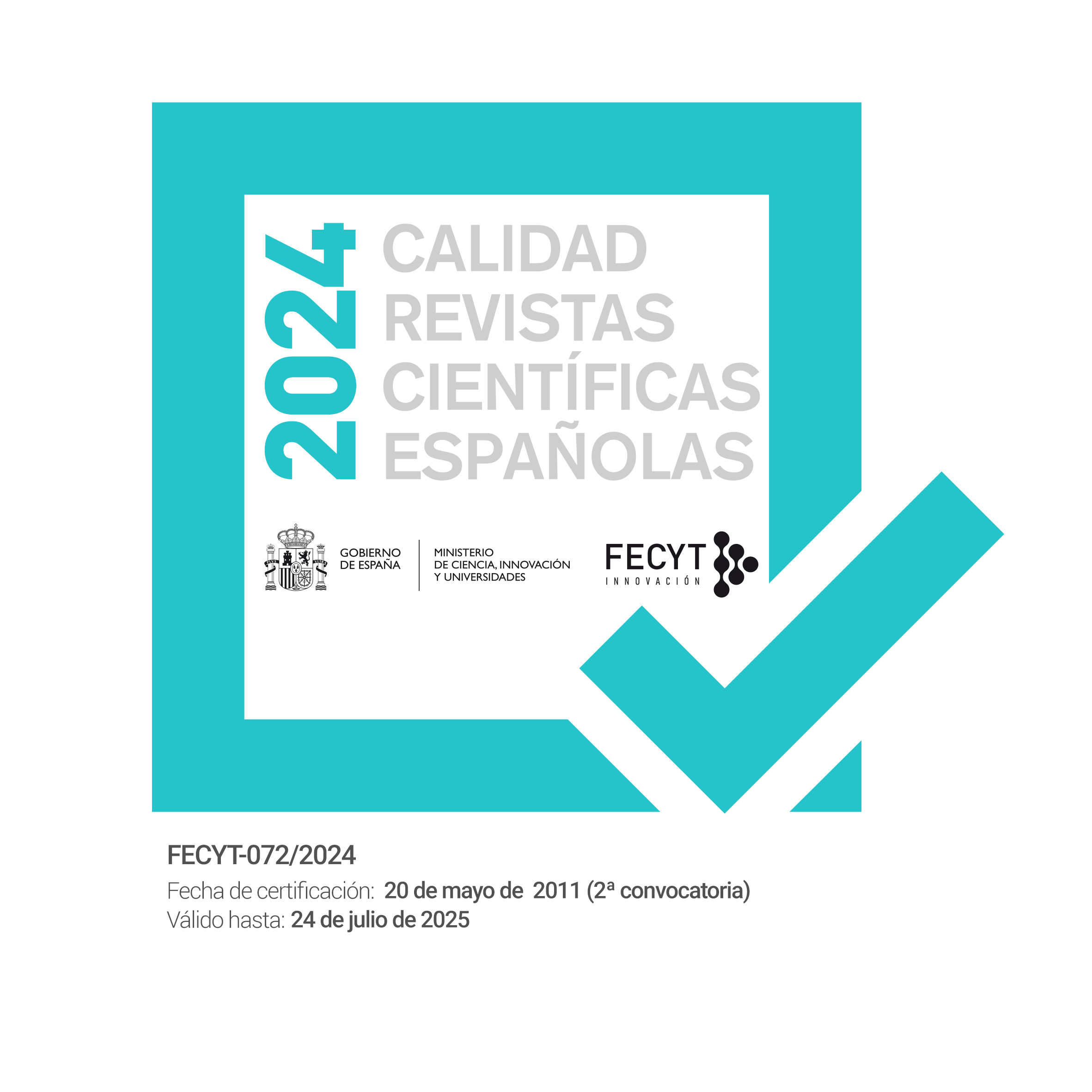Tres nuevas especies del género Argyresthia Hübner, [1825] de Guatemala, con notas sobre la evolución de la planta nutricia y taxas Neárticas (Lepidoptera: Argyresthiidae)
DOI:
https://doi.org/10.57065/shilap.444Palabras clave:
Lepidoptera, Argyresthiidae, nuevas especies, plantas nutricias, filogenética, GuatemalaResumen
Las especies neotropicales del género Argyresthia Hübner, [1825] (Lepidoptera: Argyresthiidae) representan un reservorio de biodiversidad no descrita y son los miembros menos conocidos de este género cosmopolita. A partir de una serie de material guatemalteco se describen tres nuevas especies: Argyresthia quetzaltenangonella Gorneau & Dombroskie, sp. nov., Argyresthia guatemala Gorneau & Dombroskie, sp. nov., Argyresthia iridescentia Gorneau & Dombroskie, sp. nov., representando la primera especie neotropical descrita en más de un siglo y la primera de América Central. Se infiere una filogenia utilizando el gen del código de barras citocromo c oxidasa subunidad I (COI), lo que representa una incursión inicial en las relaciones internas de la familia. Para especies con plantas nutricias conocidas y datos moleculares disponibles, se realizó un análisis de mapeo de caracteres estocásticos para estimar los estados de caracteres en los nodos internos. Además, esta filogenia permite obtener información preliminar sobre la monofilia del subgénero Blastotere Ratzeburg 1840. El trabajo sistemático sobre Argyresthia sigue siendo particularmente destacado ya que las especies del género van desde ser plagas hasta considerarse extintas. Además, se proporcionan notas sobre el estado de especies neárticas seleccionadas, como la confusión actual en América del Norte entre Argyresthia goedartella (Linnaeus, 1758) y A. calliphanes Meyrick 1913. Centrar los esfuerzos taxonómicos en Argyresthia del Neotrópico sentará las bases para el trabajo futuro con respecto a la biodiversidad, ecología y biogeografía de la familia.
Descargas
Estadísticas globales ℹ️
|
1479
Visualizaciones
|
385
Descargas
|
|
1864
Total
|
|
Citas
Alford, D. V. (1978). The true identity of the cherry fruit moth in Britain. Plant Pathology, 27(1), 35-37. DOI: https://doi.org/10.1111/j.1365-3059.1978.tb01069.x
Alford, D. V. (2007). Pests of Fruit Crops, A Color Handbook. Manson Publishing Ltd. DOI: https://doi.org/10.1201/b15135
Ahlberg, O. (1927). Ronnbarsmalen, Argyresthia conjugella Zell. En redogorelse for undersokningar aren 1921-1926. Meddel Nr 324 fran Centralanstalten for forsoksvasendet pa jordbruksomradet. Lantbruksentomologiska avdelningen.
Belosel’s Kaya, Z. C. (1963). The mountain-ash moth Argyresthia conjugella Zell. (Lep. Yponomeutidae) as a pest of the fruits of apples and mountain-ash. Entomologicheskoye Obozreniye, 4, 720-729.
Bengtsson, B. Å., & Johansson, R. (2011). Review of the unicolorous species of the subgenus Blastotere (Lepidoptera, Argyresthiidae) with descriptions of Argyresthia svenssoni sp. nov. and A. kulfani sp. nov. Entomologisk Tidskrift, 132, 257-274.
Boyko, J. D. & Beaulieu, J. M. (2021). Generalized hidden Markov models for phylogenetic comparative datasets. Methods in Ecology and Evolution, 12, 468-478. DOI: https://doi.org/10.1111/2041-210X.13534
Braun, A. F. (1910). New species of Tineina from California. Entomological News, 21, 171-179.
Braun, A. F. (1940). Notes and new species in the Yponomeutoid Group (Microlepidoptera). Transactions of the American Entomological Society, 66(1079), 273-282.
Brower, A. E. (1953). Three new species of microlepidoptera (Olethreutidae, Glyphipterygidae and Yponomeutidae). Annals of the Entomological Society of America, 46(1), 95-98. DOI: https://doi.org/10.1093/aesa/46.1.95
Busck, A. (1907). Revision of the American moths of the genus Argyresthia. Proceedings of the Unites States National Museum, 32, 5-24. DOI: https://doi.org/10.5479/si.00963801.32-1506.5
Busck, A. (1915). Descriptions of new North American Microlepidoptera. Proceedings of the Entomological Society of Washington, 17(2), 79-94.
Butler, A. G. (1883). III. Heterocerous Lepidoptera collected in Chile by Thomas Edmonds, Esq. Transactions of the Entomological Society of London, 1883, 49-90. DOI: https://doi.org/10.1111/j.1365-2311.1883.tb02939.x
Carter, D. J. (1984). Pest Lepidoptera of Europe: with special reference to the British Isles. Dr W. Junk Publishers.
Covell Jr., C. V. (1984). A Field Guide to the moths of Eastern North America. Houghton Mifflin Co.
Clerck, C. A. (1759). Icones Insectorum rariorum. Sectio Prima. Insectorium rariorum cum nominibus eorum trivialibus lociusque e C. Linnaei systema naturae allegatis. Stockholm.
Csóka, G. (2001). Recent Invasions of Five Species of Leaf mining Lepidoptera in Hungary. In A. M. Liebhold, M. L. Mcmanus, I. S. Otvos & S. L. C. Fosbroke. Proceedings: Integrated Management and Dynamics of Forest Defoliating Insects (pp. 31-36). USDA Forest Service, Northeastern Research Station. https://doi.org/10.2737/NE-GTR-277 DOI: https://doi.org/10.2737/NE-GTR-277
Folmer, O., Black, M., Hoeh, W., Lutz, R., & Vrijenhoek, R. (1994). DNA primers for amplification of mitochondrial cytochrome c oxidase subunit I from diverse metazoan invertebrates. Molecular Marine Biology and Biotechnology, 3, 294-299.
Forbes, W. T. M. (1923). The Lepidoptera of New York and Neighboring States. Cornell University.
Freeman, T. N. (1960). Needle-Mining Lepidoptera of Pine in North America. The Canadian Entomology, 92(Supplement 16), 1-51. DOI: https://doi.org/10.4039/entm9216fv
Freeman, T. N. (1972). The Coniferous Feeding Species of Argyresthia in Canada (Lepidoptera: Yponomeutidae). The Canadian Entomology, 104, 687-697. DOI: https://doi.org/10.4039/Ent104687-5
Frey, H. (1870). Ein Beitrag zur Kenntnis der Microlepidopteren. Mittheilungen der Schweizerischen Entomologischen Gesellschaft, 3(5), 244-256, (6): 277-296.
Friese, G. (1969). Beiträge zur Insekten-Fauna der DDR: Lepidoptera-Argyresthiidae. Beiträge zur Entomologie, 19(7/8), 693-752.
Heppner, J. B. (2008). Shiny Head-Standing Moths (Lepidoptera: Argyresthiidae). In J. L. Capinera (ed.). Encyclopedia of Entomology. Springer. DOI: https://doi.org/10.1007/978-1-4020-6359-6_4173
Herrich-Schffer, G. A. W. (1855). Systematische Bearbeitung der Schmetterlinge von Europa, zugleich als Text, Revision und Supplement zu Jakob Hübner’s Sammlung europäischer Schmetterlinge (Vol. 5). G. J. Marz.
Hoang, D. T., Chernomor, O., Von Haeseler, A., Minh, B. Q., & Vinh, L. S. (2018). UFBoot2: improving the ultrafast bootstrap approximation. Molecular Biology and Evolution, 35, 518-522. DOI: https://doi.org/10.1093/molbev/msx281
Hübner, J. (1825). Verzeichnis bekannter Schmettlinge. Augsburg.
Kalyaanamoorthy, S., Minh, B. Q., Wong, T. K., Von Haeseler, A., & Jermiin, L. S. (2017). ModelFinder: fast model selection for accurate phylogenetic estimates. Natural Methods, 14, 587. DOI: https://doi.org/10.1038/nmeth.4285
Katoh, K., & Standley, D. M. (2013). MAFFT Multiple Sequence Alignment Software Version 7: Improvements in Performance and Usability. Molecular Biology and Evolution, 30, 772-780. DOI: https://doi.org/10.1093/molbev/mst010
Jaastad, G. (2007). Late dormant rapeseed oil treatment against black cherry aphid and cherry fruit moth in sweet cherries. Journal of Applied Entomology, 131(4), 284-288. DOI: https://doi.org/10.1111/j.1439-0418.2007.01155.x
Korchagin, V. N. (1988). Pestsof fruit tress. Zashchita Rasten_(Moskva), (3), 48-52.
Lampa, S. (1905). Rönnbärsmalen (Argyresthia conjugella Zell.). Entomologisk Tidskrift, 26, 27.
Lewis, J., & Sohn, J.-C. (2015). Lepidoptera: Yponomeutoidea I (Argyresthiidae, Attevidae, Praydidae, Scythropiidae, and Yponomeutidae). World Catalogue of Insects, 12. Brill. DOI: https://doi.org/10.1163/9789004264267
Lienig, F., & Zeller, P. C. (1846). Lepidopterologische Fauna von Lievland und Curland. Bearbeitet von Frie- derike Lienig, geb. Berg, mit Anmerkungen von P. C. Zeller. Isis von Oken, 39(3/4), 202-302.
Linnaeus, C. (1758). Systema Naturae per Regna Tria Nature, secundum Classes, Ordines, Genera, Species, cum characteribus, differentis, synonymis, locis. Edition 10. Laurerntii Salvii. DOI: https://doi.org/10.5962/bhl.title.542
Liu, T., Wang, S., & Li, H. (2017). Review of the genus Argyresthia Hübner, [1825] (Lepidoptera: Yponomeutoidea: Argyresthiidae) from China, with descriptions of forty-three new species. Zootaxa, 4292(1), 1-135. DOI: https://doi.org/10.11646/zootaxa.4292.1.1
Looney, C., Lagasa, E., & Passoa, S. (2017). Distribution, biology, and identification of Argyresthia pruniella in Washington State. Journal of the Lepidopterist’ Society, 71(2), 117-122. DOI: https://doi.org/10.18473/lepi.71i2.a7
Maddison, W. P., & Maddison, D. R. (2018). Mesquite: a modular system for evolutionary analysis. Version 3.6. http://www.mesquiteproject.org
Meyrick, E. (1912-1916). Exotic Microlepidoptera, 1. Thornhanger. DOI: https://doi.org/10.5962/bhl.title.9241
Meyrick, E. (1916-1923). Exotic Microlepidoptera, 2. Thornhanger.
Meyrick, E. (1930-1936). Exotic Microlepidoptera, 4. Thornhanger.
Minh, B. Q., Nguyen, M. A. T., & Von Haeseler, A. (2013). Ultrafast approximation for phylogenetic bootstrap. Molecular Biology and Evolution, 30(5), 1188-1195. DOI: https://doi.org/10.1093/molbev/mst024
Moriuti, S. (1974). A new Formosan Argyresthiidae (Lepidoptera). Transactions of the Lepidopterological Society of Japan, 25, 113-114.
Moriuti, S. (1977). Fauna Japonica, Yponomeutidae s. lat. (Insecta: Lepidoptera). Keigaku Publishing Company.
Nguyen, L.-T., Schmidt, H. A., Von Haeseler, A., & Minh, B. Q. (2015). IQ-TREE: A fast and effective stochastic algorithm for estimating maximum likelihood phylogenies. Molecular Biology and Evolution, 32, 268-274. DOI: https://doi.org/10.1093/molbev/msu300
Packard, A. S. (1871). First annual report on the injurious and beneficial insects of Massachusetts. Wright & Potter. DOI: https://doi.org/10.5962/bhl.title.9676
Pennell, M. W., Eastman, J. M., Slater, G. J., Brown, J. W., Uyeda, J. C., Fitzjohn, R. G., Alfaro, M. E., & Harmon, L. J. (2014). Geiger v2. 0: an expanded suite of methods for fitting macroevolutionary models to phylogenetic trees. Bioinformatics, 30, 2216-2218. DOI: https://doi.org/10.1093/bioinformatics/btu181
Pohl, G. R., Landry, J. F., Schmidt, B. C., Lafontaine, J. D., Troubridge, J. T., Macaulay, A. D., Nieukerken, E. J. Van, Dewaard, J. R., Dombroskie, J. J., Klymko, J., & Nazari, V. (2018). Annotated checklist of the moths and butterflies (Lepidoptera) of Canada and Alaska. Pensoft.
Ratzeburg, J. T. C. (1840). Die forst-insekten oder Abbildung und Beschreibung der in der Wäldern Preussens und der Nachbarstaaten als schädlich oder nützlich bekannt geworden Insekten; In systematischer Folge und mit besonderer Rücksicht auf die Vertilgung der Schädlichen. Zweiter Theil. Die Falter (Vol. 2). Nicolaische Buschhandlung. DOI: https://doi.org/10.5962/bhl.title.35787
Rebel, H. (1940). Die Lepidopterenfauna des Azorischen Archipels. Societas Scientiarum Fennica. Commentationes Biologicae, 8(1), 35-60.
Revell, L. J. (2012). phytools: an R package for phylogenetic comparative biology (and other things). Methods in Ecology and Evolution, 2, 217-223. DOI: https://doi.org/10.1111/j.2041-210X.2011.00169.x
Rstudio Team (2022). RStudio: Integrated Development for R. RStudio, Inc., Boston. http://www.rstudio.com/
Schøyen, T. H. (1913). Beretning om Skadeinsekter og Plantesygdomme. Kristiania.
Sharma, J. P., Khajuria, D. R., & Dogra, G. S. (1988). Studies on the apple fruit moth, Argyresthia conjugella Zeller (Yponomeutidae: Lepidoptera): Identification, distribution, and extent of damage in India. International Journal of Pest Management, 34(2), 189-192. DOI: https://doi.org/10.1080/09670878809371240
Shorthouse, D. P. (2010). SimpleMappr, an online tool to produce publication-quality point maps. http://www.simplemappr.net
Shreyner, Y. F. (1906). Principal insects attacking fruit crops, particularly in the north and methods for exterminating them. Plodovostova, 23, 55.
Sohn, J.-C., Regier, J. C., Mitter, C., Davis, D., Landry, J.-F., Zwick, A., & Cummings, M. P. (2013). A Molecular Phylogeny for Yponomeutoidea (Insecta, Lepidoptera, Ditrysia) and Its Implications for Classification, Biogeography, and the Evolution of Host Plant Use. PLoS One, 8(1), e55066. https://doi.org/10.1371/journal.phone.0055066 DOI: https://doi.org/10.1371/journal.pone.0055066
Stapley, J. H. (1934). The apple fruit miner (Argyresthia conjugella Zell.). Journal of South-Eastern Agricultural College, 34, 87, 92.
Staudinger, O. (1871). Macrolepidoptera. In O. Staudiner & M. Wocke. Catalog der Lepidopteren des Europæischen Faunengebiets (pp. 473). Hermann Burdach. DOI: https://doi.org/10.5962/bhl.title.9475
Stritch, L. (2018). Castanea dentata. The IUCN Red List of Threatened Species.
Tenow, O., Nilssen, A. C., Holmgren, B., & Elverum, F. (1999). An insect (Argyresthia retinella, Lep., Yponomeutidae) outbreak in northern birch forests, released by climatic changes? The Journal of Applied Ecology, 36(1), 111-122. DOI: https://doi.org/10.1046/j.1365-2664.1999.00385.x
Tiborne, G., & Kálmán, S. (2000). Appearance of Argyresthia trifasciata Staudinger, 1871 (Lepidoptera, Yponomeutidae) on Juniperus in Hungary. Növényvédelem, 36, 301-304.
Turner, A. J. (1913). Studies in Australian Microlepidoptera. Proceedings of the Linnean Society of New South Wales, 38, 174-228. DOI: https://doi.org/10.5962/bhl.part.13558
Walsingham, L. (1890). Notes on the genus Argyresthia Hb., with descriptions of new species. Insect Life, 3(3), 118.
Wimshurst, F. M. (1928). Preliminary note on the cherry fruit moth (Argyresthia nitidella Fabr). Journal of South-Eastern Agricultural College, 25, 86-89.
World Conservation Monitoring Centre (1996). Argyresthia castaneella. The IUCN Red List of Threatened Species 1996, e.T2100A9242798.
Zeller, P. C. (1839). Versuch einer naturgemässen Eintheilung der Schaben. Isis von Oken, 32(3), 167-220.
Zeller, P. C. (1847). Die Argyresthien. Linnaea entomologica, 2, 234-302.
Zeller, P. C. (1873). Beiträge zur Kenntniss der nordamericanischen Nachtfalter, besonders der Microlepidopteren. Verhandlungen der kaiserlich-königlichen Zoologische-botanischen Gesellschaft in Wien, 23(3), 201-334. DOI: https://doi.org/10.5962/bhl.title.9391
Zeller, P. C. (1877). Exotische Microlepidoptera. Horae Societatis Entomologicae Rossicae, 13, 3-498.
Publicado
Cómo citar
Número
Sección
Licencia
Derechos de autor 2023 Jacob A. Gorneau, Loren D. Jones, José Monzón-Sierra, Jason J. Dombroskie

Esta obra está bajo una licencia internacional Creative Commons Atribución 4.0.
El autor retiene sus derechos de marca y patente sobre cualquier proceso o procedimiento dentro del artículo.
El autor retiene el derecho de compartir, distribuir, ejecutar y comunicar públicamente el artículo publicado en SHILAP Revista de lepidopterología, con reconocimiento inicial de su publicación en SHILAP Revista de lepidopterología.
El autor retiene el derecho para hacer una posterior publicación de su trabajo, de utilizar el artículo a publicarlo en un libro, siempre que indique su publicación inicial en SHILAP Revista de lepidopterología.
Cada envío a SHILAP Revista de lepidopterología debe ir acompañado de una aceptación de los derechos de autor y del reconocimiento de autoría. Al aceptarlos, los autores conservan los derechos de autor de su trabajo y aceptan que el artículo, si es aceptado para su publicación por SHILAP Revista de lepidopterología, tendrá una licencia de uso y distribución “Reconocimiento 4.0 Internacional de Creative Commons” (CC BY 4.0), que permite a terceros compartir y adaptar el contenido para cualquier propósito dando el crédito apropiado al trabajo original.
Puede consultar desde aquí la versión informativa y el texto legal de la licencia. La indicación de la licencia CC BY 4.0 debe indicarse expresamente de esta manera cuando sea necesario.
A partir de 2022, el contenido de la versión impresa y digital se encuentra bajo una licencia de uso y distribución “Reconocimiento 4.0 Internacional de Creative Commons” (CC BY 4.0), que permite a terceros compartir y adaptar el contenido para cualquier propósito dando el crédito apropiado al trabajo original.
El contenido anterior de la revista se publicó bajo una licencia tradicional de derechos de autor; sin embargo, el archivo está disponible para acceso gratuito.
Al usar el contenido de SHILAP Revista de lepidopterología publicado antes del año 2022, incluidas figuras, tablas o cualquier otro material en formato impreso o electrónico pertenecen a los autores de los artículos, los autores deben obtener el permiso del titular de los derechos de autor. Las responsabilidades legales, financieras y penales a este respecto pertenecen al autor(es).
En aplicación del Principio de Prioridad del Código Internacional de Nomenclatura Zoologica, no se autoriza el depósito en repositorios, páginas web personales o similares de cualquier otra versión distinta a la publicada por el editor.




























